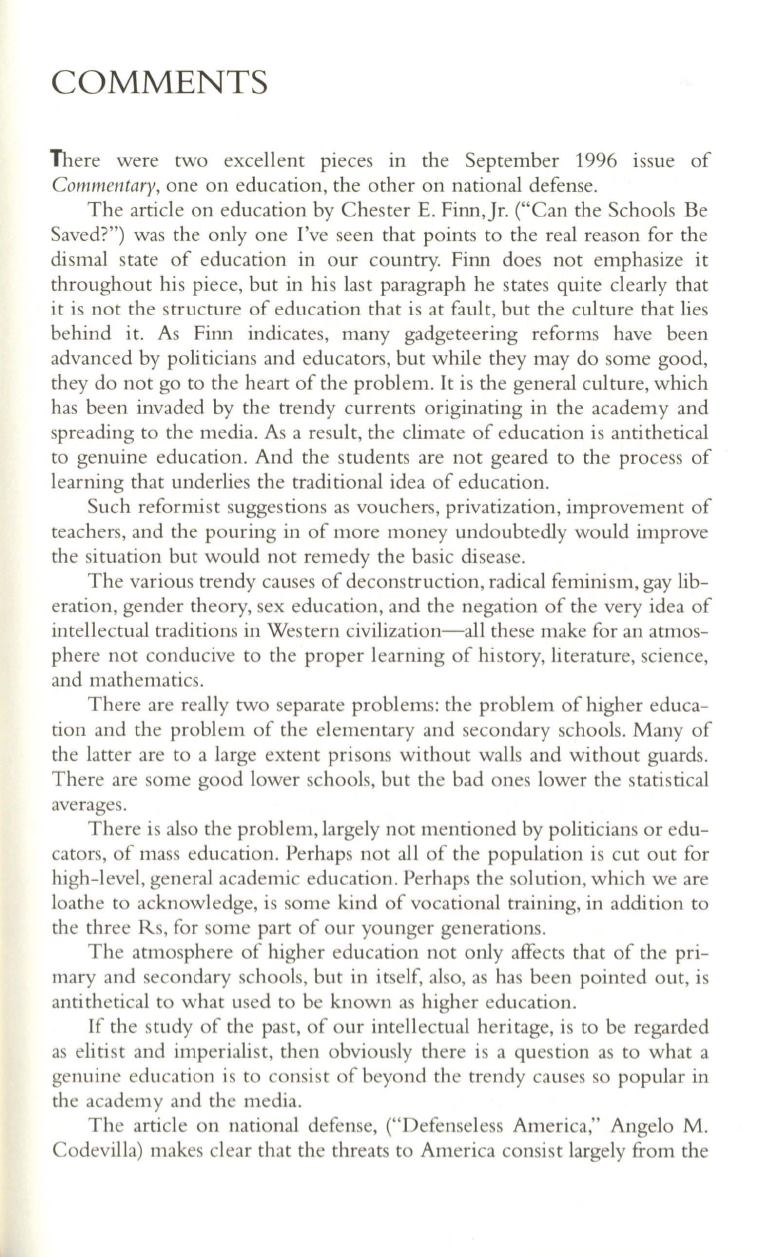
COMMENTS
There were two excellent pieces in the September 1996 issue of
Commentary,
one on education, the other on national defense.
The article on education by Chester E. Finn,Jr. ("Can the Schools Be
Saved?") was the only one I've seen that points to the real reason for the
dismal state of education in our country. Finn does not emphasize it
throughout his piece, but in his last paragraph he states quite clearly that
it is not the structure of education that is at fault, but the culture that lies
behind it. As Film indicates, many gadgeteering reforms have been
advanced by politicians and educators, but while they may do some good,
they do not go to the heart of the problem. It is the general culture, which
has been invaded by the trendy currents originating in the academy and
spreading to the media. As a result, the climate of education is antithetical
to genuine education. And the students are not geared to the process of
learning that underlies the traditional idea of education.
Such reformist suggestions as vouchers, privatization, improvement of
teachers, and the pouring in of more money undoubtedly would improve
the si tuation but would not remedy the basic disease.
The various trendy causes of deconstruction, radical feminism, gay lib–
eration, gender theory, sex education, and the negation of the very idea of
intellectual traditions in Western civilization-all these make for an atmos–
phere not conducive to the proper learning of history, literature, science,
and mathematics.
There are really two separate problems: the problem of higher educa–
tion and the problem of the elementary and secondary schools. Many of
the latter are to a large extent prisons without walls and without guards.
There are some good lower schools, but the bad ones lower the statistical
averages.
There is also the problem, largely not mentioned by politicians or edu–
cators, of mass education. Perhaps not all of the population is cut out for
high-level, general academic education. Perhaps the solution, which we are
loathe to acknowledge, is some kind of vocational training, in addition to
the three Rs, for some part of our younger generations.
The atmosphere of higher education not only affects that of the pri–
mary and secondary schools, but in itself, also, as has been pointed out, is
antithetical to what used to be known as higher education.
If the study of the past, of our intellectual heritage, is to be regarded
as elitist and imperialist, then obviously there is a question as to what a
genuine education is to consist of beyond the trendy causes so popular in
the academy and the media.
The article on national defense, ("Defenseless America," Angelo M.
Codevilla) makes clear that the threats to America consist largely from the


